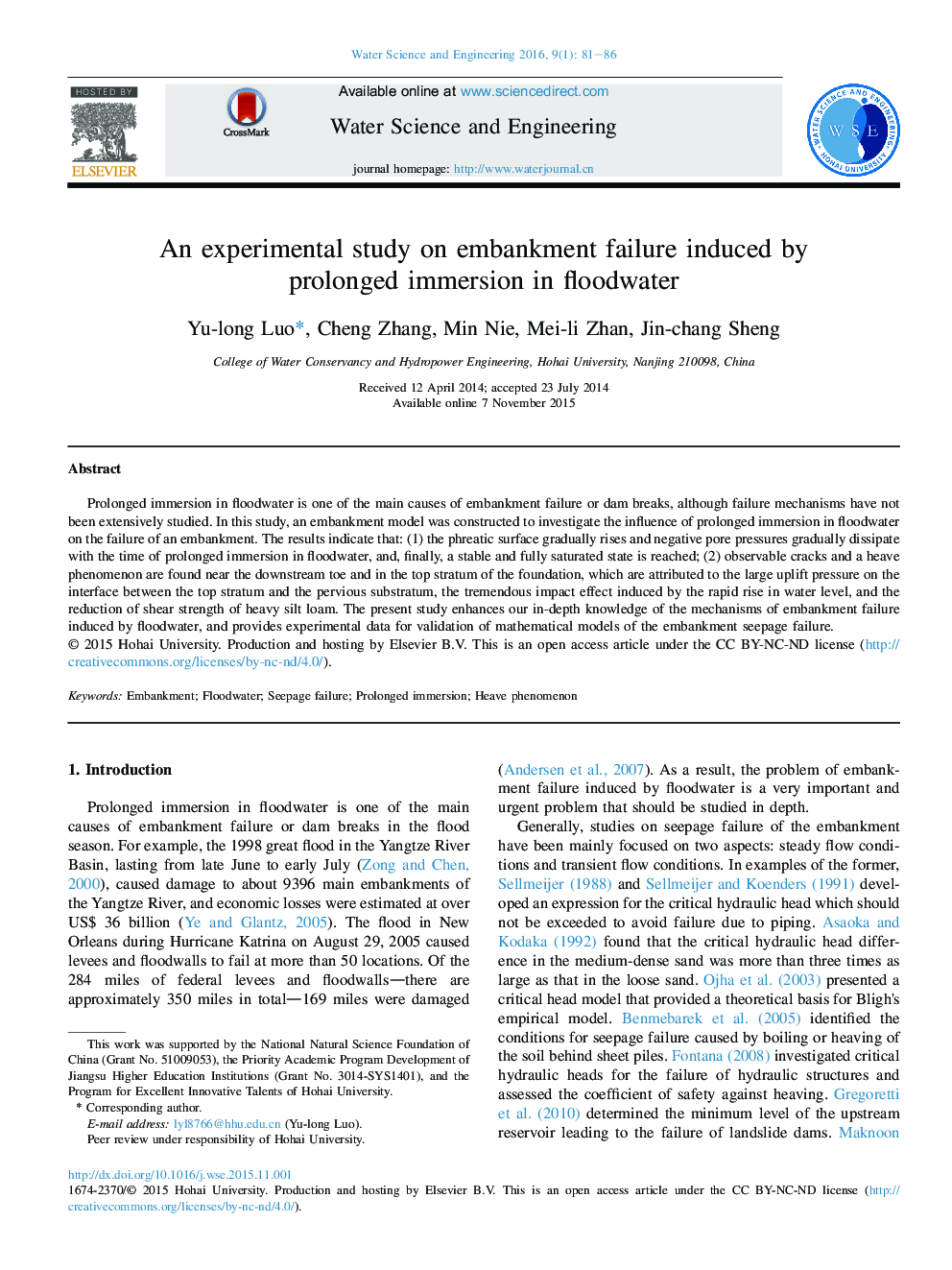| Article ID | Journal | Published Year | Pages | File Type |
|---|---|---|---|---|
| 494422 | Water Science and Engineering | 2016 | 6 Pages |
Prolonged immersion in floodwater is one of the main causes of embankment failure or dam breaks, although failure mechanisms have not been extensively studied. In this study, an embankment model was constructed to investigate the influence of prolonged immersion in floodwater on the failure of an embankment. The results indicate that: (1) the phreatic surface gradually rises and negative pore pressures gradually dissipate with the time of prolonged immersion in floodwater, and, finally, a stable and fully saturated state is reached; (2) observable cracks and a heave phenomenon are found near the downstream toe and in the top stratum of the foundation, which are attributed to the large uplift pressure on the interface between the top stratum and the pervious substratum, the tremendous impact effect induced by the rapid rise in water level, and the reduction of shear strength of heavy silt loam. The present study enhances our in-depth knowledge of the mechanisms of embankment failure induced by floodwater, and provides experimental data for validation of mathematical models of the embankment seepage failure.
